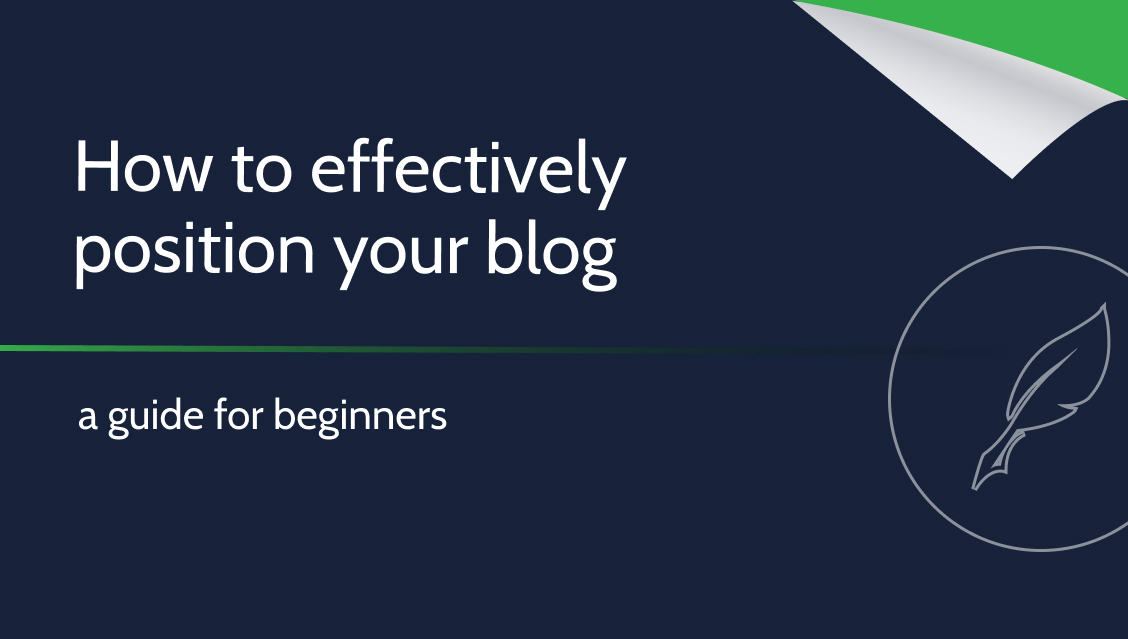How to effectively position your blog – a guide for beginners

Blogging has been around for a long time, although its profile has changed significantly over recent years – it was once an activity for hobbyists, but now it can become a full-time source of income. However, this requires a few ‘tricks’, which we will describe in this text.
What is blog positioning?
Positioning is a term referring to all SEO activities, i.e. search engine optimization. This is a series of activities that, when performed – or performed regularly – will allow your blog to appear above other results in the search engine.
Hardly anyone visits further pages of search results than the first or second one – that’s why it’s so important to be found on them.
The activities we mentioned involve appropriately adapting the content (i.e. content) on our website to Google search requirements. Unfortunately, there is a hitch – not only are there (most likely) several hundred of them, but most of them are secret. They are strongly related to the very structure of the most popular search engine in the world, which will not make its code publicly available. For this reason, optimization is a bit like playing ships without the reaction of the other player who informs us whether we hit it or not.
You should also bear in mind that this process will take time – it is not possible to build your ‘search engine’ reputation in a week or a month. Optimization is a long-term process, but this word also includes its greatest advantage – apart from being a long process, it is also a permanent process. If we lay solid foundations under it, we will enjoy constant results.
Where to start with positioning?
Regardless of whether you already have a blog on some platform or you are just planning to start one, it is worth considering using CMS platforms. To explain what they are, without going into IT details, we will use the following metaphor – they are tools that provide users with elements (let’s say ‘blocks’), each of which can build their own website according to one of the available schemes (some even allow them to personalization). Such programs have several advantages:
- enable quick and free creation of any website;
- have a number of tools that will facilitate further processes described in this article;
- have a high reputation among Google’s verification algorithms, for which the website’s trust level is one of the key optimization factors.
Therefore, regardless of whether you already have a blog or we want to have one, it is worth “moving” or starting from one of the largest CMS platforms.
The most important thing you need to remember
In this article, we will not deal strictly with writing (we have already written about creating a good blog), but it so happens that the most important element of optimization is directly related to it – and specifically to the stylistic and substantive aspect of our content.
Namely, your texts must be original, extensive, comprehensive, linguistically correct and substantive. You should say no to nonsense and short texts without any valuable information.
Google has truly advanced natural language processing algorithms and is able to very efficiently assess whether a given text (and, to a broader extent, the page as such) presents readers with content that will contain an answer to their queries (or, as Google puts it, the intention searches). If you discuss a topic, make sure to cover it comprehensively. Google values pages that answer most related questions within one text, so such an article has a greater chance of ranking high.
Ensure a constant flow of content
Of course, publishing materials regularly is equally important. Activity on your website is an important element that the search engine pays attention to. After all, if a website is constantly being developed, the owners care about its development – this is a simple and true conclusion.
Naturally, everything you publish must meet the requirements mentioned in the first point. Even if you flood our website with content worth N300,000 every day, you will not achieve impressive results without meeting the above-mentioned requirements.
It is worth preparing a publication plan at the very beginning, which will definitely facilitate future activities. Especially when there is a lot of content and we are not sure whether a given topic has not been discussed before.
When it comes to the frequency of adding articles, there is no fixed and rigid time frame. Preparing valuable content is not something that can be done in an hour, so quality should be our primary determinant. To give you an example to start with, it is worth publishing 3-6 entries a month. This should give us enough time to devote ourselves to each of them diligently, and at the same time they will still be regular.
Enrich your texts with SEO elements
It may seem strange that this issue – which is probably understood by many as synonymous with optimization – is only now being mentioned. However, a blog article is not a landing page, its audience is primarily real readers, not Google robots. SEO elements must exist, but we are mentioning them only now to draw attention to the two previous points, which play an equally important role.
Your blog posts should respond to the search intention mentioned earlier – for this reason, you should determine what the thematic scope of your website is and what questions you can answer comprehensively. After collecting this information, you are then able to take on the role of a potential user and consider what he or she enters into the search engine to find you – or for what words entered into the search engine you would like to be found.
A number of tools have been created for this purpose, including Google Keyword Planner, Answer The Public, Mangools, Ahrefs, etc. The largest ones – and those offering the most comprehensive services – are paid, but there are also free ones that are completely sufficient (even the first ones mentioned above). .
See also
Take care of the appropriate structure of the content on the website
This point will become important when you have a lot of texts (or when you already have a thriving blog that you are trying to ‘raise’ a bit in the search engine). Google analyzes the content of a page to understand its main topic. As a result of this, it knows when and to whom to display it. We can make this journey through the meanders of our articles easier for him by using a specific linking scheme. This is done according to the concept of the so-called cornerstone content and we recommend that you read it not only when you start to get lost in your own content, but also in advance to introduce clarity and order to your blog from the very beginning.
Does blog positioning end there?
Of course not. The above tips, in accordance with the assumption made at the beginning of the text, should be useful for beginners. The issue of SEO takes into account many more factors than those we have mentioned.
As we mentioned, results should not be expected overnight. Building a website’s trust is a long and tedious process. Fortunately, its effects – when we see them – will be permanent and will allow us to permanently increase the popularity of the website.
Summary
- Blog positioning involves activities aimed at ensuring a higher position in the search engine for a given phrase – and in the long term;
- The key to gaining a high position is valuable and original content;
- Articles should be written based on topics related to a keyword that is important to us;
- Content should be published regularly, but always ensure its quality.


















Comments
Thanks for sharing this timely article.